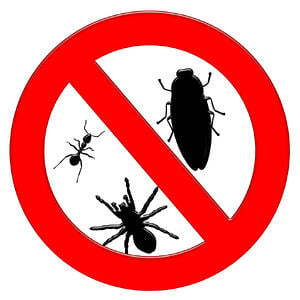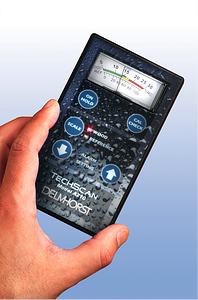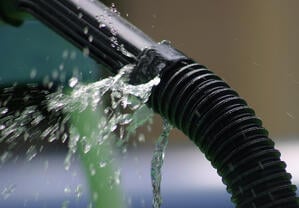 The information provided by moisture meter readings can reveal much about the unseen state of a home. Home inspectors can use readings of a material’s moisture content to identify areas at risk for a range of other adverse issues, such as mold, bacteria and pest infestations.
The information provided by moisture meter readings can reveal much about the unseen state of a home. Home inspectors can use readings of a material’s moisture content to identify areas at risk for a range of other adverse issues, such as mold, bacteria and pest infestations.
But can a moisture meter detect insects? In this blog, we’ll describe the important role moisture meters have in pest detection and removal.
Moisture as a Warning of a Potential Infestation
Many building inspectors use moisture meters to indirectly identify pest infestations within a structure’s walls, floors and ceilings. Moisture meters make this possible by detecting moisture in hospitable areas for pests, where they can grow and thrive without human interaction. While fungi and mold begin to grow in wood with moisture content around 20%, pest infestations are different: some species of beetle and borer insects thrive inside wood with only 12% moisture content.
These insects can cause visible property damage and significantly ruin the value and even the structural integrity of building components. As moisture-affected wood often hosts these pest species, it is important for home inspectors to identify all areas susceptible to infestations. This can be done most effectively using pin-less and pin-type moisture meters.
Moisture Meters and Detection Ability
 Home inspectors commonly use pin-less moisture meters to identify broad problem areas that can fall victim to insect and pest infestations. These rugged meters use radiofrequencies to scan general surface areas for internal moisture presence, and are especially useful when inspecting surfaces that cannot by physically penetrated.
Home inspectors commonly use pin-less moisture meters to identify broad problem areas that can fall victim to insect and pest infestations. These rugged meters use radiofrequencies to scan general surface areas for internal moisture presence, and are especially useful when inspecting surfaces that cannot by physically penetrated.
Alternatively, inspectors may choose to use pin-type meters in their inspections. When inspectors use these meters, they insert two contact pins into the affected material, and obtain precise moisture readings. These meters are more accurate than pin-less meters, but cover a much smaller area; because of this, the most effective home inspectors scan for pest-friendly moisture using both pin-less and pin-type moisture meters.
Common Infestation Environments
Troublesome and damaging pest infestations can be the product of virtually any uncontrolled moisture penetration in a home’s surface. Thorough home inspections should consider all possible areas moisture can infiltrate a home, including:
 Cracked pipe lines or poorly installed drain systems.
Cracked pipe lines or poorly installed drain systems.- Unsealed window or door cracks, or other minor openings.
- Faulty insulation or wood quality.
- Plumbing within walls and a building's structure.
- Areas insufficiently prepared for adverse or extreme weather.
- Damp basements and attics.
- Materials affected by a leaky roof.
Successful home inspectors use moisture meters to help homeowners take proactive action against moisture penetration, and the pest infestations that moisture can bring.
As these infestations can be even less noticeable than mold and fungi growth, it is important for home inspectors to be equipped with the most reliable inspection tools during their work. Reading moisture content at crucial locations can be a quick, and still effective, way for home inspectors to check a home for moisture and pest infestation without sacrificing significant time.
Home inspectors who use moisture meters in their inspections are generally much more successful in identifying both pest infestations and severe moisture concentrations. This increase in service quality in turn improves business and reputation for many home inspectors.
If you are a home inspector interested in learning more about what moisture meters can do for your business, or how elusive pest infestations can be found with moisture meter technology, contact us today or complete a request form to find out which moisture meter is right for you. Our experienced personnel can tend to all of your moisture detection needs.

Comments